








For thousands of years, farmers in cultures around the world have interwoven dance, music, and art through rituals of planting and harvest in celebration of the land, soil, and those who care for it. Through a contemporary approach and within this timeless context, Wormfarm continues that tradition…
Join us for a unique road trip and travel the Farm/Art DTour through 50 miles of Sauk County, Wisconsin’s farmland. Within this verdant landscape (that may or may not allow for digital wayfinding), you’ll discover site-responsive artworks, the art of farming, and plentiful roadside attractions. Be sure to pick up a paper map, your analog guide to an abundant mix of art, land, and sky on the edge of the Driftless.
Come for art but get much more: Ancient geology. Agriculture in transition. Glimpses of history. Fragile wetlands. Tractors, combines, and milk trucks slowing your roll (a good thing!) Weather surprises. A different point of view.
Come for a drive in the country and get: Inspiring responses to the land by artists from across the nation. Surprising conversations with strangers. An unfurling reminder that we humans are only one part of this entangled biotic community.
Not bad for a free event… though you’ll find plenty to buy, too, at the shops, markets, taverns, farm stands, and cheese factories along the way. Bring your curiosity and some old-fashioned cash. We’ll see you out on the land this fall.

Wormfarm Institute Executive Director
Reprinted from the 2014 Fermentation Fest Event Guide
by Max Garland
Everything is flowing—going somewhere, animals and so-called lifeless rocks as well as water. —John Muir
Art, music, and poetry in the Wisconsin countryside are nothing new. Fiddles stirred the air of 19th century lumber camps. Our great grandmothers translated rural evenings into Nine-Patch and DoubleWedding Ring patterns. They knew the language of the running stitch, the value of passing beauty down. Walk through any rural cemetery and conjure up the ghosts from beneath the most weathered tombstones, and you’ll be hard pressed to find one who can’t recite whopping passages of Longfellow or Tennyson.
Last October, navigating the 50-mile loop (the Farm/Art DTour) out from Reedsburg during the annual Fermentation Fest, I witnessed the continuation of this tradition of integrating culture and agriculture, human creativity and natural beauty. On a grassy hillside I listened to a wind-aided aria sung from the back of a hay wagon by a soprano wearing a skirt of corn husks. In a stubbled field I poked around a John Deere 6600, the metal panels of which had been replaced by stained glass. Further along, I stopped to watch children along a ridge flying kites shaped and spotted like Holsteins.
It’s a drive that’s stayed with me, though more accurately, it’s the stopping. Too often, accelerating along beltlines, cruise controlling the interstates, we’re in a state of mini-jet lag (or Toyota lag, maybe). This dis-orientation is obvious when we fly across time zones, but a more insidious version happens whenever we experience forests, hills, bluffs, and farmsteads as variegated blurs, entire counties as 70-mile-an-hour winds. In
the hurried, miraculous nowhere land of interstate travel, you can follow directions beamed down from 12,000 miles in space, calculating your position to within a stone’s throw of any
It’s not until we’re prompted to stop, turn off the engine, unclench the jaw and shoulder muscles and begin to see and feel in human time, or something older, that we’re anywhere at all.
hill or molehill in Wisconsin, and still have no earthly idea where you are. You’ll be at the proper coordinates, but with little notion of who lives there, or why, their hearts and minds, the relative state of local wonder.
It’s not until we’re prompted to stop, turn off the engine, unclench the jaw and shoulder muscles and begin to see and feel in human time, or something older, that we’re anywhere at all. It takes awhile for the landscape’s blur to redefine itself into maple, poplar, beech; the slopes and streams to reveal themselves. Ironically, it’s only when we stop, we’re able to understand that land itself is motion— waves of hills, water chiseled creek beds; every inch of soil occupied with molecular hustle, each handful alive with more organisms than there are people on earth—all moving, degenerating, regenerating. It’s only when we stop, we’re able to hitch onto an older, sustaining motion.

What does this have to do with art? Exactly what is the point of a soprano singing from a hay wagon?—Well, there’s beauty, which is point enough, but we’re also reminded that even the most sophisticated voice springs from flesh and bone, resonates with the pulses and rhythms of landscape where song preceded us by a long shot. A stained glass combine? Again, strangely beautiful, but also, placing stained glass, typically associated with places of worship, onto a John Deere hints at something worthy of adoration in the field itself, as well as the acts of cultivation and harvest. The point of cow-shaped kites? Aside from the faces of children, we’re reminded of the connection between wind, sky, grass, and the creatures who feed us. What starts out as gawking, ends up illus trating, through the medium of exhilaration, just how much is tethered to sunlight.
Art amplifies what landscape quietly asserts—the world rises in wildly imagined forms, falls, replenishes itself, and our individual fates are braided into the loop. Art, like forests or farms, bears crucial, eloquent witness to time and place. Our great grandmothers made quilts to keep us warm, but also made them beautiful, for without that flourish, it’s a frail flame we pass from one generation to the next.
a yellow-shafted flicker, though I expect they had other business in the neighborhood.

Art amplifies what landscape quietly asserts.
Of course, thousands of years before fiddles and quilts there were pictographs, petroglyphs, pottery, songs, drums, flutes, and dances expressing what it means to inhabit and be inhabited by this place. My favorite rural art installation, in fact, is not far from Reedsburg. It’s a 214 foot long effigy mound in the shape of a human (or god, or spirit?). The Man Mound is a thousand years old, give or take a few centuries, the only human shaped mound surviving in Wisconsin. There’s a lot we don’t know about this figure, but it’s not hard to catch the general drift of a magnified human form collectively shaped from local soil.
I’m sitting a few feet from the Man Mound as I write. It’s a spring day, and at the moment the mound is covered in several thousand wild violets. A few fiddleheads unfurl near his shoulder; there’s a smattering of dandelions, a sparse traffic of moles. I’m blind to most of what’s here, the trillions of organisms animating his shape (as well as my own). After a couple of hours, however, I do feel myself beginning to arrive. The only visitors have been an indigo bunting, an oriole, a few crows, a fox squirrel, and
off our engines, unplug our ears, step back into the world we never left, but nevertheless have been partially absent from. I’d travel a long way to be stilled by an ancient effigy, or hillside aria, or holy combine.
Sitting here by the Man Mound, I find it interesting that although he’s occupied this place for a millennium, he’s depicted in motion, heading west, like me. That he’s earth, like me. Frankly, we’re both a little worse for wear. A county road has slashed him just below the knees. There’s been erosion (in both of us), and according to the historical marker, the mound barely dodged the plow a number of times. After all these years, it’s a wonder he’s survived at all. The longer I sit here, the less coincidental it seems, that it’s by cultivating wonder, as well as land, up from dust and back again, the rest of us survive.
Max is Professor Emeritus at UW-Eau Claire, a songwriter and musician, and the former Poet Laureate of Wisconsin. He is the author of several books including his most recent Into the Good World Again.
Please consider making a tax-deductible donation today

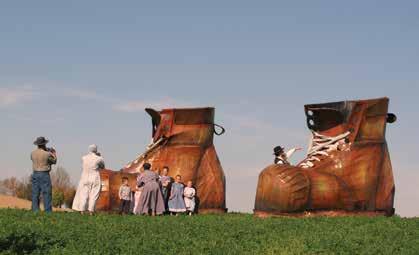



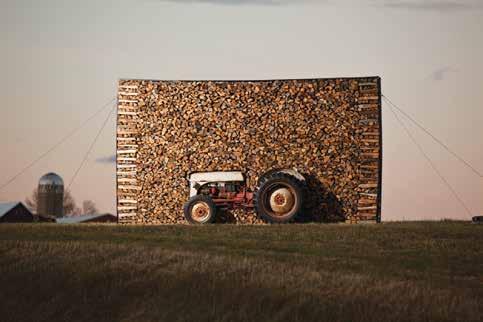

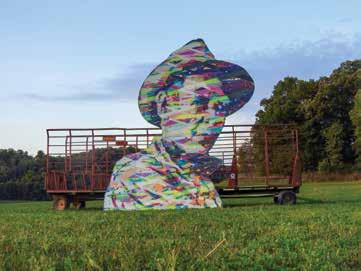


Over the course of 10 DTours, scores of artists have been invited to create original works in Sauk County’s farm fields, ranging from sculptural objects, to interactive environments, to work activated by natural processes. Some have invited hands-on participation, used existing agricultural infrastructure, or were installed on buildings in the small towns along the route. Each artwork has elevated the event and drawn visitors closer to the land. With great thanks to all artists from 2011-2022:
Laura Annis, WI*
Brenda Baker, WI*
Molly Balcom, MN
Sara Black, IL*
Emilie Bouvier, MN
Charlie Brouwer, VA
Austen Camille, TX
Terrence Campagna, MI
Willy Chyr, IL
Mary Dickey, WI
Bryce Dwyer, IL
Sean Elmquist, MN
Thomas Ferrela, WI
Franck Feurté, France
Christopher Field, KY
Sarah FitzSimons, WI
Anwar Floyd-Pruitt, WI
Isabelle Garbani, NY/France
Rosalynn Gingerich, IL
Amber Ginsburg, IL*
Martha Glowacki, WI*
Rita Grendze, IL
Jenny Hale, CA
John Himmelfarb, WI*
Brent Houzinga, LA
Suzanne Husky, CA/France
Chase Johnson, IL
Matt Joynt, IL
Gail Katz-James, MN
Michael Kautzer, WI
Sarah Kavage, WA
Kristin Klingman, WI
Peter Krsko, WI*
Joshua Lansky, IL
Christopher Lutter-Gardella, MN*
Faheem Majeed, IL
Heath Matysek-Snyder, VA
Matthew Mazzotta, NY
John S. Miller, WI*
Bill Mitchell, WI
Jeremy Mundth, WI
Erika Nelson, KS*
Crysten Nesseth, MN
Sheila Novak, MA
Alexis Ortiz-Duarte, WI
Beth Persche, WI
Andrea Polli, NM
Molly Rideout, IA
Hartmut Ringel, WI*
Joshua Pablo Rosenstock, MA
Lia Rousset, IL*
David Sanchez Burr, IL
Katie Schofield, WI
Cathi Schwalbe, IL*
Vanessa Smith, IL
Brian Sobaski, MN*
Lucas Spivey, MA
Emily Stover, MN
Madeline Straka, WI
Christopher Sweet, WI
Tory Tepp, FL*
Jamie Topper, IL
W. Scott Trimble, WA
Denise Rolland Troyer, IN
Karl Unnasch, MN
Randy Walker, MN
David Wells, WI*
Sarah West, KY
Jesse Lee Wilson, NY
Actual Size Artworks, WI
Baraboo Range Preservation Association, WI
And a special thank you…
A huge thank you to all the gracious farm hosts who have welcomed artists and thousands of visitors onto their land across three different DTour routes!
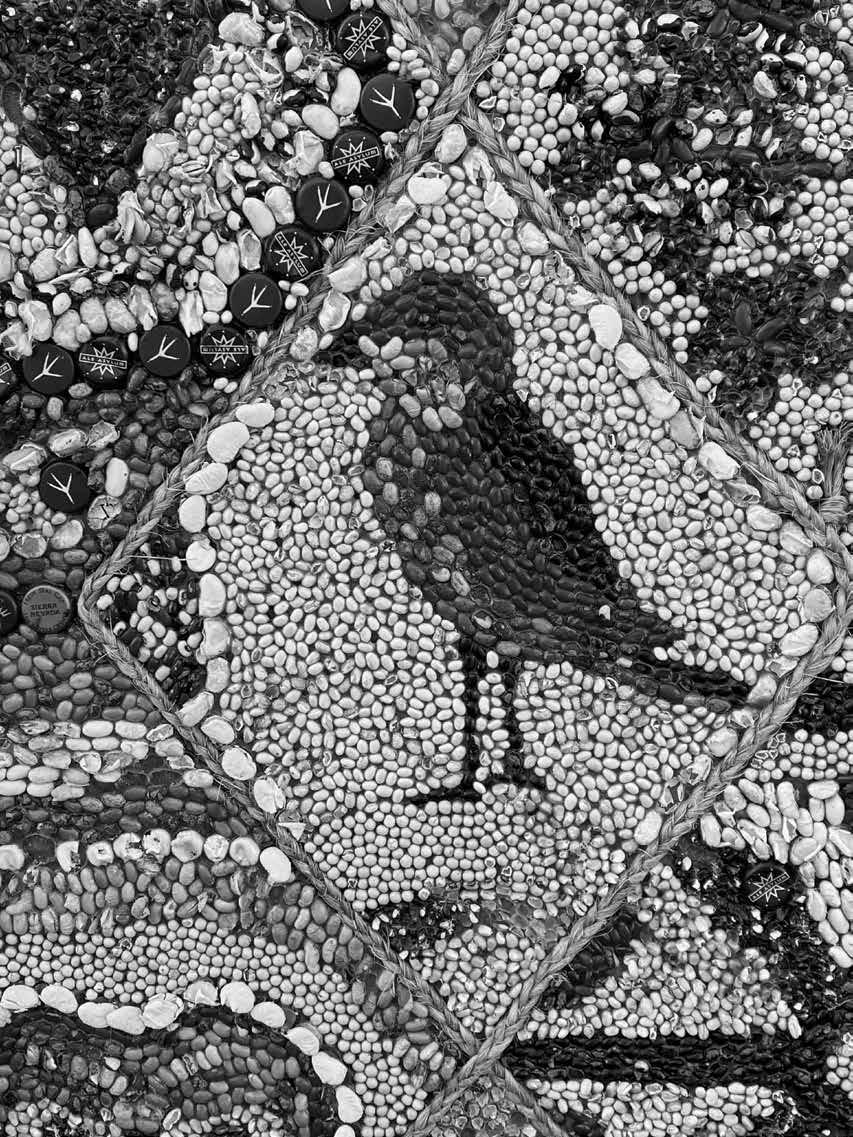
See page 17 for 2024 selected artists
*Artist has participated multiple years
by Robert McClure
It is 1974, and my suburban father has taken a notion to buy an abandoned farm.
Where the impulse has come from is a mystery. He regarded back-to-the-landers with the same bilious skepticism he reserved for every other youthful fashion, and spontaneity was otherwise as unknown to him as it is to a clock. Nevertheless, one day the springs somehow popped loose.
Dispatching to the countryside was not novel in the 1970s, nor was it in the 1880s when immigrants from German villages arrived to build the rural house my parents later fixed up. Indeed, by that time, Europeans had already been disembarking from east coast cities for more than a cen tury to settle—the term is used, but is surely not the right one—the outlands of the continent. Religious visionaries were particular enthusiasts, dotting the Midwest and plains with their Edens, once the local inhabitants had been cleared away at gunpoint.
Those who may have grown up surrounded by too many paved surfaces might want to observe the process closer-up…

Han Shan left urban China in the 8th Century to scribble verse on rock faces no one was likely ever to see—an endeavor he evidently deemed sufficiently more meaningful than life in the city, to spend the rest of his days shivering on a mountainside. Biblical prophets famously set foot for the desert to gain a deeper understanding of life. The tradition of urban exodus may indeed go back to Ur.
The draw from city to country is rather less tractable. While there are incidental prompts these days, like remoteworking and the economic pressures of urban gentrification, I suspect that for many transplants, if you asked them, the word “meaning” would come up. The term connotes many things of course, but in this case there would likely be commonalities: A desire to feed oneself from the land, to physically engage the process of life, to produce something with one’s hands. It is a miracle, after all, that we are physical—that we grow out of the land, that our souls arise from passing soil through soil—so it's little wonder that those who may have grown up surrounded by too many paved surfaces might want to observe the process closer-up, to see what magic might be hidden inside.
Photo by Katrin Talbot
Such motivations may seem soft-minded to those who have been inured to the inconveniences and often difficult work that attend life in rural places. So it is probably a good thing— perhaps even an evolved response—that we humans trade places as much as we do. People can be hard on the things we've come to love once we know them too well. Miracles seem like a good antidote to this. We shouldn't discount the ability of mystery, and people's desire for it, to help counteract the bare-fisted disregard with which we've come to treat the earth.
Abandoning country for city still remains far more common than the reverse. The economic reasons for this are obvious, especially if you've ever tried to make a living at farming.
That the future will be wracked by more heat, more rain, greater stretching of resources, is a near certainty. But if people are still moving to Sauk County to be closer to the miracles, it seems like the place might be in good hands.
Rob is a farmer, writer, and weather forecaster who co-owns Hilltop Community Farm with his wife Erin.

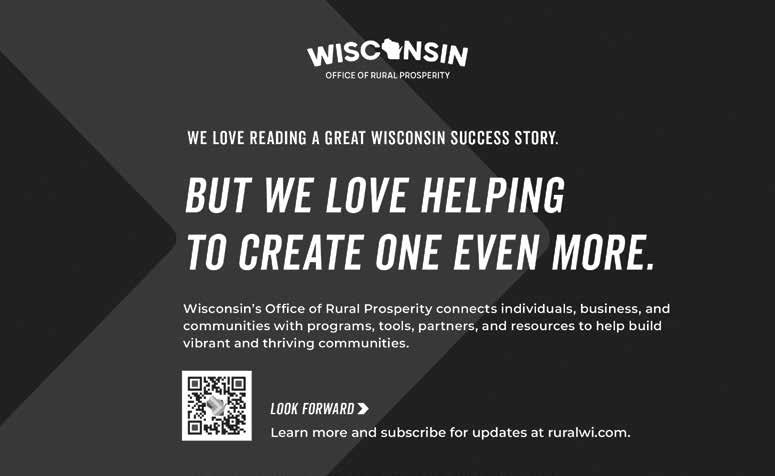
It’s an elemental connection of past to present, rural to urban, and individual to community. Most of all, the Trail connects people.

by Diahann Lohr
Through much of Wisconsin meanders a geological treasure known as the Ice Age National Scenic Trail. More than 2.3 million people of all ages, backgrounds, and interests follow the Trail’s yellow blazes to connect to the land, to physically challenge and discover themselves, to decompress, to soothe their souls.
One of only 11 National Scenic Trails, the Ice Age Trail is a 1,200-mile footpath following the edge of the most recent glacier that covered parts of Wisconsin. In 2023 the Trail was granted unit status by the National Park Service.
The Trail offers something for everyone. It wanders through uninterrupted stretches of Northwoods,
explores cultivated fields and farm woodlots, winds across open prairies, and weaves through urban communities. It’s an elemental connection of past to present, rural to urban, and individual to community. Most of all, the Trail connects people. While a partnership of agencies, including the Ice Age Trail Alliance, are involved in its management, it is passionate volunteers who are mostly responsible for creating and maintaining the Trail.
The Ice Age Trail connects past to present, but what about the future?
“Our goal is always the completion of the Ice Age Trail,” says Luke Kloberdanz, executive director for the Ice Age Trail Alliance. “The Trail is one of the greatest walks in the world.


It showcases the beauty of Wisconsin and highlights spaces where agriculture and conservation meet. We have this shared vision of doing what’s best for people, the land, and the critters that dwell on it. In 50 years, if the Trail was complete, it would be a dream come true.”
This year, after exploring the Farm/ Art DTour, take extra time and visit the Ice Age Trail. Enjoy it now and imagine what it could be!
Diahann is a graphic designer and owner of Adunate Word & Design, and an avid hiker and naturalist


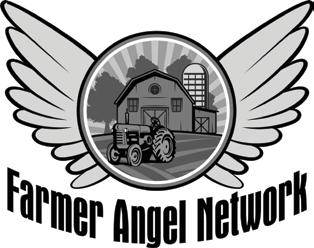
As much as farmers love the land and the communities they support, farming can be a solitary, stressful way of life. Working through the challenges that Mother Nature, the commodity markets, or broken pieces of machinery can bring, struggling to pay bills and keep up with daily tasks as more projects pile on, feeling helpless and alone in these moments.
Farmers used to have natural support systems: card playing circles, neighborhood chore rotations, church gatherings, canning events where people came together to support each other. These happen less now—and as agricultural communities also struggle to access mental health support, talking about feelings is not common.
…talking about feelings is not common.
In 2018 following the suicide of a farmer, the Sauk County community started to talk and listen. They created a safe space to come together to discuss, share, and learn about farm stress and the rising rates of suicide. From this, the Farmer Angel Network (FAN) was formed.
FAN seeks to spread awareness, bring back supportive community practices, and help neighbors when they need it. The goal, over time, is to end isolation and help communities come back together. To make conversations about mental health as normal as conversations about achy joints. To ensure that every farmer in Wisconsin feels valued and connected.
Learn more at farmerangelnetwork.com and follow FAN on Facebook.

The public’s hunger for on-farm connection continues to rise. With just 1.2% of the American population working in fields, with livestock, or harvesting timber, more and more people are seeking unique, authentic experiences on the land. As farmers innovate to meet that demand, they’ve got questions!
• Does it cost a lot to start?
• How would agricultural tourism affect my insurance?
• Are there any rules and regulations?
• What about zoning?
• Do I need lots of acreage?
• How much should I charge?
• How do I attract visitors?
The Wisconsin Agricultural Tourism Association, better known as WATA, is a 31-year old membership-driven nonprofit helping to address these questions and promote member ag-tourism businesses, allowing family farms to create new revenue streams.

Listen to mentor farmers’ podcasts at gowiagtourism.com to learn more and visit wiagritourism.com to find your next Ag-venture!


(found quote)
"I sat for a long while in one of the rectangular courtyards [of the National Gallery] listening to the fountain. Feeling the artists all around me, I slowly took an unassuming place (for two of my own sculptures were somewhere in the museum) among the people whose lives, as all lives do, had been distilled into objects that outlasted them. Quilts, pin cushions, chairs, tables, houses, sculptures, paintings, tilled and retilled fields, gardens, poems—all of validity and integrity. Like earthworms, whose lives are spent making more earth, we human beings also spend ourselves into the physical. A few of us leave behind objects judged, at least temporarily, worthy of preservation by the culture into which we were born. The process is, however, the same for us all. Ordered into the physical, in time we leave the physical, and leave behind us what we have made in the physical."
—Anne Truitt, Daybook: The Journal of an Artist (2013)
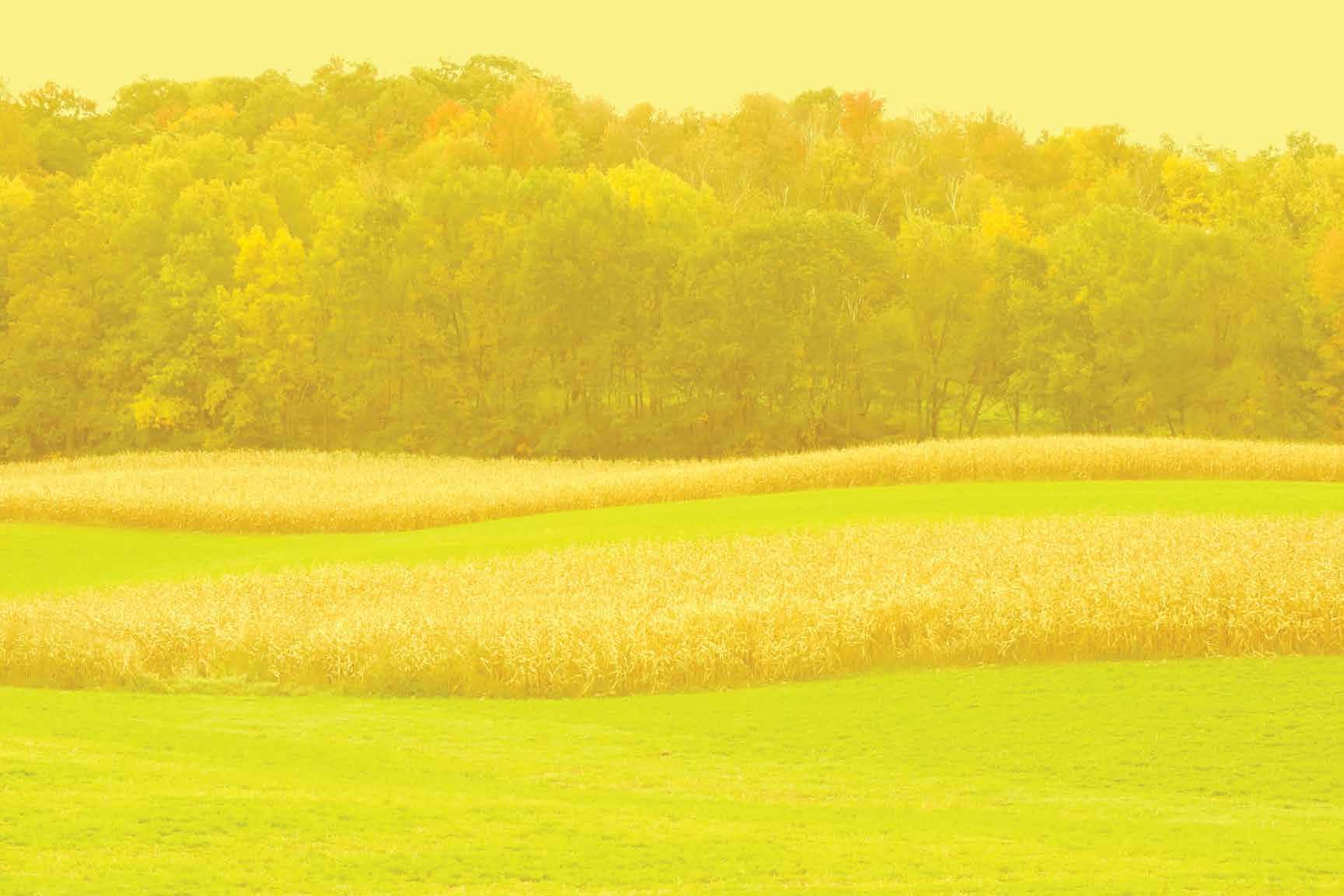
Sauk Prairie Area Chamber of Commerce: 109 Phillips Blvd. Sauk City Kraemer Library & Community Center: 910 Main St. Plain
This is a momentous YEAR 10 of the Farm/Art DTour. Over the years, hundreds of thousands of DTourists from near and far have driven, biked, or buggied along Sauk County’s winding rural roads. In their wake, towns have been enlivened, businesses have formed, and new attention has been paid to this fertile, storied landscape and those who care for it.
Here’s a preview of the 2024 DTour route, but be sure to pick up the official DTour Map starting in September. Maps will include detailed locations of Artworks, Field Notes, Farm Forms, Vendors, Attractions, and Offshoots. Don’t leave home without it!
You never know what might be around the next bend…
Check our website for updates on how to best access the DTour route if you’re coming from the north or southwest.
Lots of land and sky, but phone reception can be spotty! Trust us, you’ll want the paper map.

Immerse yourself in the Driftless landscape at a slower pace while helping to reduce the DTour’s carbon footprint. Download a bike cue sheet from wormfarminstitute.org or pick one up at the DTour Trailheads. Moderately hilly terrain along public county roads, recommended for experienced riders. Stay tuned for info about group ride opportunities.
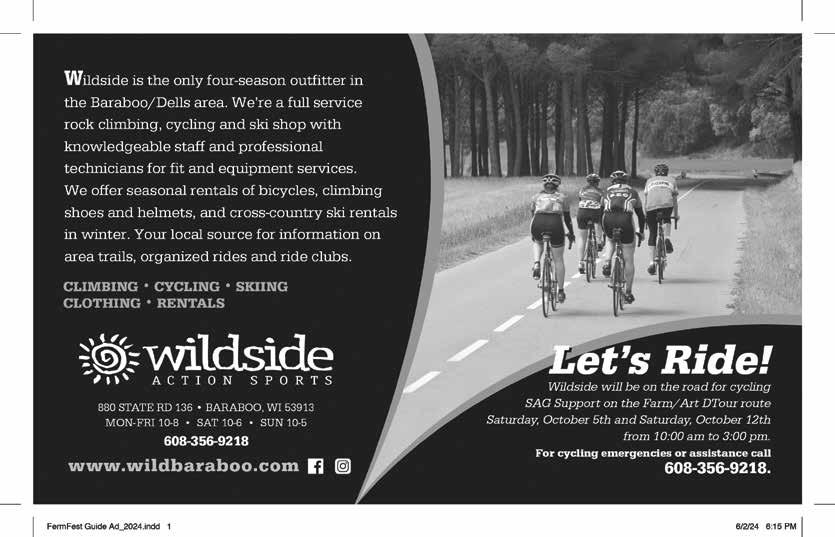

return to a wheel and sprocket pace, body-powered, muscle, burn less gas, instead sweat to make tires turn, turn to Butterflies –Zebra Longwing, Great Purple Hairstreak, Monarch – breathe deep Thistle-musk, slight-vanilla-Blazing Star, anise-Goldenrod, as the sun sets on Scrub Jays, Spoonbills, Egrets, Braham-amble, curl-and-slide of Eastern Indigo, Farm Cat-hunker – and listen to thunder staccato in a cloud-thick, summer sky
pedal in the Driftless, awestruck by prairie kettle, meltwater, planet-tilt toward the sun, sand deposits piled and thickened into bluffs – inhale the heady-loam of marsh, revere the Cattail balance, liquid-pitch of Red-wings, bouncy-trill of Field Sparrows in Bur Oaks – slow down for Chipmunks, Hickory nuts, Daddy Long-legs – listen to Barn Swallow zip, heart-hum of Bumblebees, and Painted Turtle splash
yes – almost on water, on an island cut thin through a grand lake, ride almost dangerous – wind-chopped waves, potential tip – and safe bolster line of giant, marble slabs, ruins and habitat, home for Blue-Spotted Salamanders, Snowy Owls, Green Frogs, Common Water Snakes, this path shaded by American Elms, a lineage, reminder to survive
wander into dark, cool channels, rock-echo, slow-drip with bats – Little Brown, Big Brown, Northern Long-Eared – hang on, still, with hope, light at the end of the tunnel, cross wood trestles over ravines, treetop-height with Red-tail Hawk, Bald Eagle, wing-brush, hush-hush of Long-leaf Pine, resin-mellow, glisten of Orb Spider web, impressive cling of Lady Beetle to leg muscle
aspire to appreciate the shift from asphalt to gravel, sand-slip of towpath, where a baby giggles in a stroller, breeze through her toes – how she will grow tricycle-fierce, scooter-determined, skate-smart, deck-savvy, curious about White-tail Deer swimming canals, and rivers dropping into gorge, where she will listen to rapids as applause, Spring Peeper as pop song, how she will perfume her hair in Wild Plum and abandon deadline-busy for spoke-click, fluorescent-headache for fresh air, dappled light, sputter-start, exhaust, and rage-talk for helmet-nod, eye contact, bike-smile, Main Street, kind, hello
—Michelle Seaman
Michelle often performs in collaboration with musical projects and is the author of the book Grant Me the Tooth.




Celebrating its tenth year, the DTour returns to southern Sauk County from October 5-14! Wander through small towns, country churchyards, and a diverse landscape— from the bluffs of the Baraboo Hills to the Sauk Prairie and working farmland between. Here, artists explore the timeless connections between land and people; farmers perform fundamental, inspiring work; and lines that can sometimes separate—converge, or are happily blurred.
Plan to spend a day or two on this magical meander! See pages 12-13 for a preview of the DTour route, then pick up a detailed paper map at one of the Trailheads in Sauk City or Plain, WI.
Come experience 360 degrees of land, art, and sky this fall, and meet the innovative farm hosts, businesses, and agri/cultural organizations who call Sauk County home!
This eclectic mix of artists from around the country were selected to create site-responsive work in Sauk County's beautiful farmland:
Brian Sobaski (MN)
Catherine Schwalbe (IL)
Cathy McCauley, Pamela Self + Shari Gullo (IL)
Gabriela Jiménez Marván, Leonardo Linares + Ryan Rothweiler (WI + MX)
Hartmut Ringel (WI)
John Himmelfarb (WI/IL)
Jongil Ma (NY)
Martina “mars” Patterson (WI)
Matthew Vivirito (WI)
Rachel E. Dohner + Olivia Comai (IL)
Scottie McDaniel + Marshall Prado (TN)
Tory Tepp (FL)
• Get an Early Start
The full DTour can take anywhere from 3-6 hours.
• Pick up an official map at DTour Trailheads See page 12 for locations.
• Drive Carefully & Yield to Farmers
Tractors, bicycles, motorcycles, and buggies share the road. Use your turn signal and remember, this is harvest season. Always yield to farmers!
• Be Respectful Park only on the road shoulder, obey all signs, and be kind.
• Support Local
Check the official DTour Map and our website wormfarminstitute.org to find where to eat and shop. Remember small businesses and roadside stands appreciate cash
• Enjoy the Ride!
Adapt to the culture, slow down, get a little lost.

Be sure to visit the Food Chain stop at Historic Witwen Park located at the heart of the route. You’ll find local goodies for now and later including tacos & tamales by the Hispanic Knights of Columbus…plus local ferments, baked goods, and more. Food vendors only on weekends. Music and art shop too—shop open every day.
A former church camp and historic gathering place in a quiet setting next to Honey Creek, Witwen Park has been stewarded by the Sprecher family since 1922. The first record of summer revival meetings held on this land dates to 1853 when 34 tents were pitched for several weeks on the banks of the creek. Built in 1918, the tabernacle is listed on the National Register of Historic Places.
Since its life as a former church camp, the park has hosted a variety of events and concerts. For decades, it was home to a famous 4th of July parade attended by thousands: cars lined the road to Hwy PF over a mile away. Since 2020 Wormfarm has hosted Fermentation Fest and the biennial Farm/Art DTour here, and is leading an effort to imagine a future for this unique site.
Learn about our effort to imagine the future of Witwen Park.

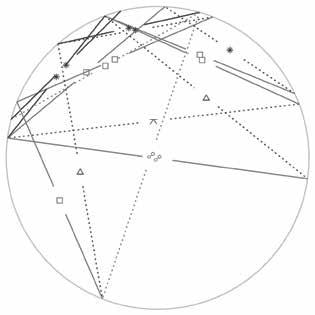
Brought to you by
Wormfarm Institute is a nonprofit organization dedicated to building a sustainable future for agriculture and the arts by fostering vital links between people and the land. Based in Wisconsin, Wormfarm has been working for 20+ years to create new economic opportunities in the region and to support a flourishing cultural ecology by bringing rural and urban communities together around farming, land conservation, and the arts. Wormfarm's initiatives include a foundational artist residency program, the management of “roadside culture stands” across the state, and a series of Test Plots that lead up to the biennial Farm/Art DTour.
Dedicated to integrating culture and agriculture, Wormfarm is an evolving laboratory of the arts and ecology, and fertile ground for creative work. Planting a seed, cultivating, reaping what you sow… both farmer and artist have these activities in common.
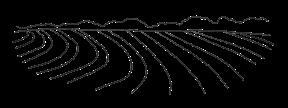
“Every fertile grain of soil has passed at least once through the gut of an earthworm.”
–Charles Darwin

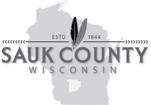











○This project is funded in part through grants from: The National Endowment for the Arts, The Educational Foundation of America, Good Chaos, the Hoke Family Foundation, the Wisconsin Arts Board with Funds from the State of Wisconsin and the National Endowment for the Arts, and people like you!

The DTour is free to attend but not free to produce. Please give today to support our cross-sector agri/cultural work! All contributions are tax-deductible and every dollar helps. Donate at wormfarminstitute.org/donate.
